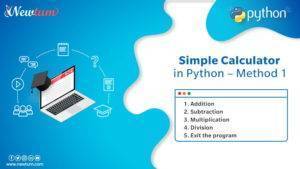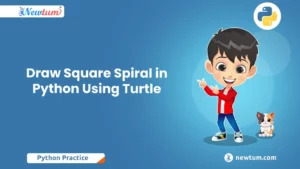Python is becoming the “go-to” programming language in the rising field of data science. Every day, more and more data scientists are either starting with or switching to Python for the analysis & visualization of data. And the high rise in the demand for data scientists is, quite frankly, skyrocketing Python’s popularity by the minute.
Beginners Guide to Learn Python for Data Science
Simplicity is the driving force behind Python’s success. Python gets the task done with less code than other programming languages due to its efficient syntax. On top of that, Python has a dedicated community of users, which is yet more passionate within the data science community. Python for Data Science presents an abundance of professional opportunities that’ll keep on growing in the coming years.
6 Reasons to Learn Python for Data Science
Step 1: Start with a Python Course (Python fundamentals)
Firstly, it’s key to understand that you won’t be using Python for developing software applications as a data scientist. Most data scientist tasks revolve around retrieving, visualizing & building models, for which you only have to focus on the modules and libraries in Python.
Newtun’s Core Python Certification Course will boost your plans to enter the data science community. It covers every detail of the fundamentals starting with the Anaconda installation. You’ll have a good grasp of Python to start your journey in data science by the end of the course.
Step 2: Learn Scientific Libraries – NumPy, Pandas & Matplotlib
Here’s a brief introduction to the three best Python libraries for data science that make things fun.
- Numpy: It’s widely used to perform mathematical & statistical operations in data science. It also forms the basis for many features of the Pandas library.
- Pandas: The library is specifically created to facilitate working with data.
- Matplotlib: A data visualization library used to generate charts from data.
Now, if you don’t want to knock around platforms asking individual questions about these Python libraries and wait, you should take Newtum’s Complete Python Certification Course. After the course, you’ll be equipped with the skill-set to take up live Data science projects.
Step 3: Learn Scikit-Learn for Machine Learning
Scikit-Learn is the most popular Python library for machine learning. Here, your objective is to learn to implement common machine learning algorithms using Scikit-Learn. In due process, refer to online tutorials and books to grasp the practical use of Scikit-Learn. Also, remember to constantly challenge your skill set with new practical coding exercises every day to speed up the learning process.
Step 4: Practice & Keep Up with the Data Science Community
Put your new theoretical knowledge into daily practice to keep up your progress. You should also keep in touch with the online Data Science community. For you can test your skill-sets through the frequent live competitions within the community. Apart from this, you’ll stay in the loop of all the latest developments and get access to free resources.
Step 5: Deep Learning
In a nutshell, deep learning algorithms share the structure of a human brain to draw similar conclusions as a human. You should consider deep learning once you’ve learnt most of the machine learning techniques. Sound knowledge of deep learning puts you ahead of the majority of the data science community. And if you have high ambitions of working with tech giants, then deep learning is a must.
Step 6: Work on Live Data Science Projects
Once you’ve made the right connections in the Data Science community, you’ll get ample opportunities of working on live Data Science projects. And a portfolio always helps.
Projects you should work on while learning Python for Data Science
- Data Cleaning Projects
- Data Visualization Projects
- Machine Learning Projects
Conclusion
If you’re an aspiring data scientist, then you should get a headstart on Python. Python for Data Science lays the foundation of all futuristic applications.



